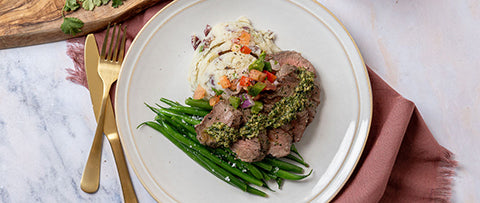Imagine this...a small, crisp batter cake, baked in between two shallow metal pans hinged together, filling the room with the smell of warm maple.
Waffles! We’re talking about waffles! The traditional toasty breakfast treat that we love to top with syrup or fresh fruit, mix with chocolate chips, and even serve alongside some crispy chicken.
Waffles are a staple in the breakfast world and historians have traced waffles as far back as Ancient Greece!
Waffles have gone through quite the journey leading up to where we are now.
A Quick History of Waffles
The history of waffles is a long journey, so here's an abridged version:
- They started as simple as flour and water mixed together, pressed between two irons, and cooked over an open flame.
- Fast forward to the 15th century...eggs, milk, honey, spices, and leavening agents are added to the mix.
- It wasn’t until the 1800s when waffles really gained their popularity; August 24,1869 to be exact (National Waffle Day!). Cornelius Swartwout of New York invented the first stove-top waffle iron.
- Fast forward 20 years in 1889, Aunt Jemima waffle mix hits stores.
- Then in 1953 waffles pop up in store frozen as the ever so famous Eggos.
- And here we are now, living in a world full of different kinds of waffles, healthy waffles such as Start Right Waffles
Present Day: Healthy Waffles
I know what you’re thinking...wait, waffles can be healthy? Remember, waffles started out as just water and flour, and over the years evolved into so many different combinations. So yes, waffles can be healthy! While there’s nothing wrong with the traditional waffle ingredients, the white flour, refined sugar, and butter may not be conducive for your ideal weight and healthy lifestyle.
So how do you get a healthy waffle? Well, it’s all about the ingredients! Healthy ingredient swaps can make all the difference.
Let's start with the structure of a waffle--flour. White flour can easily be swapped with a complex carb like oat flour, brown rice flour, or whole wheat flour. Complex carbohydrates digest slower because they’re harder for our bodies to break down, which leaves us fuller longer and helps stabilize blood sugar levels.
Now onto the sugar, because who doesn’t love a little sweetness in their waffle? Refined sugars are digested quickly, which can cause insulin and blood sugar levels to skyrocket. This can also cause you to not feel as full after you’re done eating. Instead, opt for natural sugars; honey, agave, maple syrup, coconut sugar, applesauce, fruits, etc.
Then there’s butter, sure it tastes good and adds body and texture, but butter can be high in calories and saturated fat if too much is used. Saturated fats decrease good cholesterol in the body, so we want to consume them in moderation. Alternatively, try substituting butter with Greek yogurt, coconut oil, or mashed banana.
Let’s touch on portion control, too. A good estimate for a portion of carbohydrates is about the size of your fist.
Have Your Waffles & Eat Them, Too
The average person probably doesn’t have time to prepare homemade waffles from scratch too often; this goes back to that crazy evolution of waffles!
Now they are available frozen and already prepared with healthy ingredients for you. Talk about convenient! These waffles can usually be found at your local grocery store. Just make sure you read the ingredients list for the healthy swaps mentioned above. One of my favorites is Start Right Waffles.
Pair your healthy waffle with some protein and fat (depending on what all your waffles are made with) for a balanced meal or snack to stay fueled.
Here's a perfect example of balance when indulging in some warm, maple waffles: Scrambled, free-range eggs, Start Right Waffles made from oat, brown rice, and sweet potato flour, and whey protein powder; paired with the perfect portion of bacon and a side of agave nectar.
So, the next time you’re wondering if you should wake up and have waffles for breakfast...do it!






